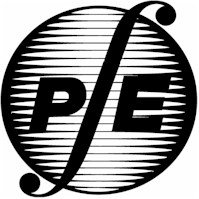Idaho Society of Professional Engineers
Friday Update - 06/18/04
UPCOMING EVENTS:
● NSPE 2004 Convention and Expo, July 8 -
10, 2004, Honolulu, Hawaii
● Mailing Deadline for FE and PE
applications for Fall 2004 testing, August 1, 2004
● ACEC of Idaho Annual Meeting, August 6 -
7, 2004, Sun Valley, ID
● NSPE Western and Pacific Regional
Meeting, September 17-18, 2004, Coeur d'Alene, ID
New Online Seminars
NSPE is now offering new online seminars: New Standard Form SF 330: Your Key to
Doing Business With the Feds (June 16) and Offshore Outsourcing of Engineering
Work (September 22).
Learn more and register now!

MATHCOUNTS PROBLEM OF THE WEEK
Can you solve this MATHCOUNTS problem? The answer will appear in next week's
edition of the Friday Update!
Graduation Requirements Are Scrutinized
About half of the nation’s students trying to graduate from high school are
in states that require students to pass a state assessment test first. Recently,
six states with such tests participated in a study that looked at the required
knowledge for passing these tests. The six states were MD, MA, TX, OH, FL and NJ
and these states include approximately a quarter of the country’s high school
students. On average, what percent of the country’s high school students do each
of the other 44 states include? Express your answer to the nearest tenth.
--------------------------------------------------------------------------------
When looking at the assessment tests in MD, is was discovered that about half of
the students passed the algebra portion and six in 10 students passed the
government portion of the test. According to this data, what is the positive
difference between the greatest possible percent of students who could have
passed both the algebra and government portions of the test and the least
possible percent of students who could have passed both of these portions?
--------------------------------------------------------------------------------
The organization performing the study determined that most of the questions on
the tests in these six states involved concepts that are generally taught in the
10th grade or earlier. See if your MATHCOUNTS training helps you to solve this
problem from the math portion of the “Released Spring 2004 Test Items” from the
Massachusetts Department of Education: Baily noticed that many of the students
at her school had red hair. She randomly chose 25 of the students in her school
and found that 2 of them had red hair. If Bailey’s sample is representative, how
many of the 2200 students at her school have red hair? (This problem was
modified out of its multiple-choice format.)
Answer to last week's problem:
Basically, we see that the final exam score carries the same weight as two
quarter grades. Therefore, if we let the final exam grade be x, then we can
solve 87 + 89 + 92 + 91 + x + x = 92 × 6. This simplifies to 359 + 2x = 552.
Subtracting 359 from both sides and then dividing by 2, we have x = 96.5.
--------------------------------------------------------------------------------
From the information we’re given and our knowledge of factoring, we know that
the quadratic equation can be factored into (x + h)(x + k) = 0, where h × k = 20
and h + k is the coefficient of x. We need to find factor pairs of 20 that have
the greatest possible sum and the least possible sum. The factor pairs are 1&20,
2&10 and 4&5. The possibilities for the coefficient of x are then 21, 12 and 9.
The difference between the greatest and the least is 21 – 9 = 12.
--------------------------------------------------------------------------------
Since the numbers increase, we know that the arithmetic sequence involves adding
a positive value to 6 to get the second number, and then adding that same
positive value to the second number to get the third number. This value could be
1, which would result in the combination 6-7-8. The value could be 2 or 3 or 4
or …, and each of these would result in different three-number sequences. We now
need to find just how big this value that we’re adding on can get. Notice that
if the value is 30, our combination becomes 6-36-66, but the numbers on the lock
don’t go up to 66. They only go up to 45. The difference between 45 and 6 is 39,
and since 39 ÷ 2 = 19.5, the arithmetic sequence that goes from 6 to 45 would be
6, 25.5, 45. But remember that the combination lock only has whole numbers. This
does help us, though, because we now know that we can’t have a common difference
of more than 19.5 for the numbers in the combination. We can have a difference
of 19, which would yield 6, 25, 44. It appears that a common difference between
the numbers in the combination of any integer from 1 through 19 will give us
legitimate combinations, so there are 19 possibilities.
If you want to see last week's problem again, click on
http://www.mathcounts.org/Queries/POW_Archive.taf?_function=detail&Q_A_uid1=498&_UserReference=A169BC03DA9A83B740D07780
Idaho Society of Professional Engineers
PO Box 170239
Boise, ID 83717-0239
208-426-0636
Fax: 208-426-0639
E-Mail: ispe@rmci.net
Web Site: www.Idahospe.org
 Idaho
Society of Professional Engineers
Idaho
Society of Professional Engineers